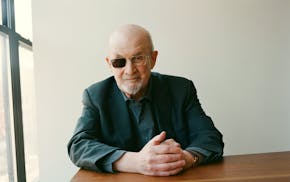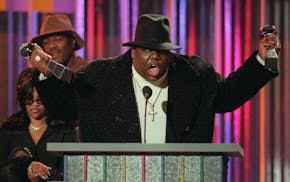No matter how many times Marlon Ferrey warns school groups before he leads them into the Day of the Dead exhibit at Centro community center, "They think something is going to pop out and try to scare them," he said. "It isn't going to happen, but I can understand why they think that way."
The kids see the skeletons and intricately decorated skulls, and they hear the stories about how the holiday often is marked by people bringing food, flowers and candles to cemeteries, where they hold parties that can last late into the night. With all of this coming during the height of the Halloween season, it's only natural that they would jump to the wrong conclusion, he acknowledged.
"It's a very festive, very happy holiday," said Ferrey, the artistic and cultural director of Centro at 1915 Chicago Av. S. in Minneapolis. "It's not supposed to scare people."
The holiday's roots go back 3,000 years. Typically celebrated Nov. 1-2, it's primarily associated with Mexico, but other Latino cultures also mark the event, "although to a lesser extent," Ferrey said.
In Minnesota, the number of people taking part in Day of the Dead festivities is difficult to judge because participants celebrate both publicly and privately. Many build private altars, called ofrendas, in their homes, he said.
It's a time of remembrance that is closer in purpose to Memorial Day than Halloween, said Ana Luisa Fajer, general consul at the Mexican consulate in St. Paul.
"The belief behind Day of the Dead practices is that spirits return to the Earth for one day of the year to be with their families," she said. "The spirits are greeted with offerings of food and things that the person enjoyed in life: beans or rice or tamales or, yes, tequila. It's about celebrating more than about mourning."
Susana De Leon, director of the Twin Cities-based Kalpulli KetzalCoatlicue Aztec dance troupe, which performs at Day of the Dead celebrations, said that tone of the holiday is a major difference from Halloween.
"Halloween is about gore. This has nothing to do with gore," she said. "Yes, there are skeletons, but look at them closely. They have joyous faces, and they are decorated with flowers, so they are full of color.
"This is a very happy occasion. It's a chance to sit once again with your late grandfather or your mother or your child. It brings a lot of solace to your spirit."
The church's influence
Nov. 1 is for remembering adults who have died, and Nov. 2 is for children. The back-to-back timing with Halloween is not a coincidence.
"The indigenous people tied it to the fall harvest," De Leon said. "It was connected with the idea of the land going into a period of rest, the notion that life is a continuum."
Originally there was no set date for the holiday, although it typically was celebrated during the last week of October or first week of November. It wasn't until the Spaniards brought their Roman Catholic religion to Central America that Day of the Dead was permanently designated for Nov. 1 to coincide with All Saints Day, which also was known as All Hallows. Halloween, of course, is the evening before All Saints Day.
The church's influence aside, "this is not so much a religious holiday as it is a spiritual one," Ferrey said. "It's about connecting with the souls" of those who have died.
Otherwise, the Centro exhibit is available for anyone who wants to pay tribute to their ancestors by bringing in photographs and gift offerings.
"A lot of these pictures weren't here when we opened the exhibit" last week, he said, gesturing toward an altar in one corner of the room. "Everyone is welcome to share in this. In fact, last year, someone even put up an altar for pets, and people came in and put their dead pets' names on little cardboard tags that looked like dogs' tags."
Asked if that seemed a little frivolous, he agreed that it was -- which, in his mind, made it a perfect addition to the exhibit.
"This is all about fun," he said. "It's about celebrating life, not death."
NPR suspends editor who criticized his employer for what he calls an unquestioned liberal worldview

Salman Rushdie's 'Knife' is unflinching about his brutal stabbing and uncanny in its vital spirit

